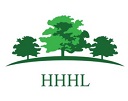



The plants found along the Hidden Heritage Trail at High Lodge are windows into the past. The landscape around High Lodge has changed over the centuries before Thetford Forest was planted in the 20th century and the plants reflect those changes.
Humans have lived on this site for hundreds, if not thousands, of years, and much of the vegetation around was of value in the home and at work. For example, that commonest of plants, the Stinging Nettle, was a necessity to the medieval inhabitants of High Lodge. It provided a green vegetable, nettle beer, fibres for making twine and rough clothing, and yellow and green dyes to brighten the fabric. Stinging Nettles were also used as a remedy for a variety of ailments. Our ancestors could not have survived without the nettle, and if you find nettles you will know that people lived close by.
Other plants are reminders that High Lodge once was the headquarters of a rabbit warren, and later a mixed farm. Many of the common plants close to the Heritage Trail would have provided the fodder and bedding for the animals such as gorse (the young shoots were fed to the rabbits in winter) and bracken (bedding for cattle and sheep).
The more open areas alongside the route give another glimpse into the past. The spectacularly bright and beautiful plants flowering in these clearings are a reminder of what was found on the open Breckland heaths before Thetford Forest was planted, or turned into agricultural land during the second half of the last century. Many of these heathland plants were important to those who lived in the vast, bleak area of East Anglia as they provided free ingredients for herbal medicines, food and fuel.
Insects also flourished on the open heaths and tracks across the Brecks but declined in number with the change of land use. Nowadays it is the rides and clearings in Thetford Forest that provide havens where flowers can grow and insects prosper. Many species of bee, butterfly, moth and other rare insects may be glimpsed during the warmer months as they nectar on the flowers growing in the sunny clearings close to the Heritage Trail.
To provide the open, cropped grassy areas for the plants, Forestry England cuts the fire rides between the grassy verges and the conifer plantations. At some locations the verges have been widened to the benefit of the flora. These management practices give space and air for many of the smallest, and rarest, of Breckland plants to germinate and thrive. The planting, thinning and harvesting of timber creates extensive ground disturbance allowing other more common Breckland species such as Viper's Bugloss (Echium vulgare) to colonize these areas. This ground disturbance is replicated on verges beside some rides to encourage plants that require bare earth to germinate.
Regular surveying of forest sites with the help of Natural England, Plantlife, Norfolk and Suffolk Wildlife Trusts helps record the exact location and number of rare plant colonies so allowing Forestry England to create action plans for their protection during forestry operations.